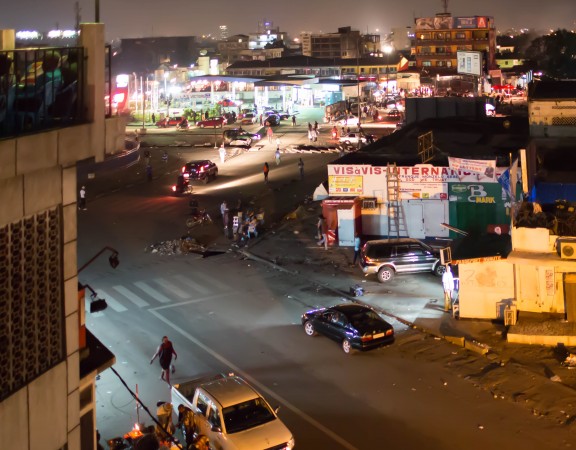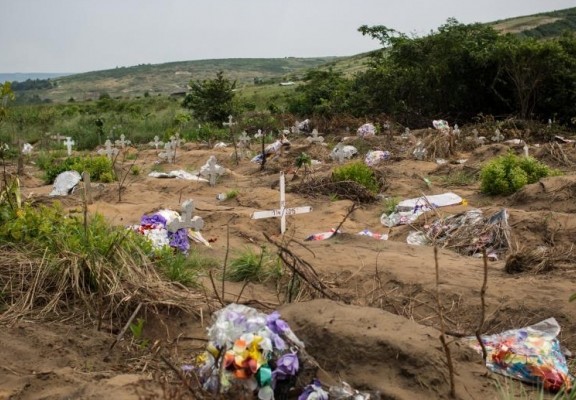- Showcasing the beauty, power and potential of the Congo and its people | Call-in details: +1 410-481-1010 | Toll-free Call-In: +1 877-704-1010
Points of view
Article initially published on HuffingtonPost.com. Written by Kambale Musavuli.
The Democratic Republic of the Congo (DRC) is home to the deadliest conflict in the world since World War Two, according to the International Rescue Committee. An estimated six million people have perished in the DRC since 1996 both as a direct result of killings and the impact of the war on livelihoods. During this same period, hundreds of thousands of women have been systematically raped as a strategy of war. In 2011, Margot Wallström, Special Representative of the UN Secretary-General (SRSG) on Sexual Violence in Conflict dubbed the DRC “the rape capital of the world.” According to Doctors Without Borders, the Congo story has been among thetop ten most under-reported humanitarian stories in the world for ten years straight.
A number of activist organizations in the West have launched campaigns that tell a narrative from their perspective, that the rapes in the Congo are fueled by bloodthirsty militia groups who conduct mass rape in order to trade in so-called conflict minerals (coltan, tin, tungsten, gold) that consumers in the West use. Therefore it is up to Western consumers, through their advocacy, to bring an end to the conflict in the Congo by pressuring the companies from which they buy electronic and technology goods. This narrative places peace in the Congo and Congo’s salvation in the hands of Western do-gooders.
Although the depredations and brutality of the conflict in the Congo are for the most part true, such realities and the way they are told in the West, fall far short of explaining the whole story or revealing the nature of the political and geo-political dynamics at play. In an effort to provide a more layered and holistic story of the Congo, young Congolese along with key allies have launched a radio show in the United States called CongoLive!
CongoLive! is a weekly radio show, providing listeners with views and news from the richest and mostly forgotten country in the heart of Africa. The program highlights and showcases the cultural strengths and beauty of Congolese people, revealing the richness of the land and its inhabitants. It serves as a platform for mostly Congolese, other Africans and people of good will to articulate the remarkable human and natural potential of the Congo.
The dominant story told by the corporate media is one of Congolese helplessness and terminal humanitarian disaster, where millions of Congolese are waiting for Western do-gooders to come and rescue them through campaigns such as “conflict minerals.”The courageous fights being waged by Congolese to combat what is essentially the ravages of capitalism and imperialism, is rarely if ever told.
The manner in which Congolese are using art, music, theatre and other cultural tools to pursue peace, justice and human dignity is for all intents and purposes non-existent in the corporate media. Hence, alternative media becomes the central artery for getting out the most significant and consequential stories about the Congo to a global audience.
The enormous challenges faced by the Congolese people will only be successfully addressed when Congolese take the lead. However, if you were to follow the corporate media, one would be led to believe that the solutions are found mainly in the West among white saviors who know best the solutions for the Congo.
Congolese are clear that they have everything within our culture and country to be victorious over the onslaught of the people as a result of greed, corruption and the manipulations of Western nations via Congolese elites, neighboring countries, multilateral institutions and multinational corporations.
Congo’s natural potential is legendary. It is a part of the second largest rainforest in the world making it vital to the fight against climate change. The Congo has tremendous bio-diversity being home to thousands of species of plant and animal life. It has the largest fresh water reserves on the African continent. It has the agricultural capacity to feed the entire world. Economists estimate Congo’s natural wealth at about $24 trillion, which is nearly equivalent to the Gross National Product of the United States and European Union combined.
Congolese music is the most popular music among Africans on the continent of Africa. Its art has influenced the likes of Matisse and Picasso. Its rich heritage has produced giant figures such as Patrice Emery Lumumba, Congo’s independence hero who was overthrown and subsequently assassinated with the complicity of the CIA.
Today’s generation are tapping into Congo’s heritage and culture as a source of inspiration for transforming our country via every conceivable channel. We are leveraging alternative media to tell our own stories, exercise agency and invite allies to be a part of the remarkable tradition and resilience of Congolese people. Without alternative outlets the most significant stories and narrative that are pertinent not only to our history and heritage but also our ultimate liberation would not reach a global audience.


